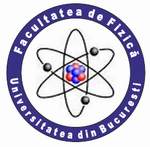| |
 |
UNIVERSITY OF BUCHAREST
FACULTY OF PHYSICS Guest
2025-10-05 22:30 |
 |
|
|
|
Conference: Bucharest University Faculty of Physics 2025 Meeting
Section: Physics and Technology of Renewable and Alternative Energy Sources
Title:
Performance Analysis and Decarbonization Potential of Nuclear-Renewable Hybrid Energy Systems with Solar and Wind Integration
Authors:
Andreea DRAGAN, Sanda VOINEA
Affiliation:
University of Bucharest, Faculty of Physics, 405 Atomiștilor str., PO Box MG-38, Bucharest-Măgurele, Romania
E-mail
andreea.dragan@unibuc.ro
Keywords:
hybrid energy systems, Concentrated Solar Power, nuclear power plants
Abstract:
This paper presents an in-depth analysis of hybrid energy systems that integrate nuclear energy with renewable energy sources, specifically Concentrated Solar Power (CSP) and wind energy. The study build upon the operational principles of nuclear power plants and technologies for solar radiation and wind energy conversion, emphasizing smart cogeneration and optimal use of available resources. The research is motivated by the global transition towards low-carbon energy systems and explores innovative configurations that combine the stability of nuclear reactors with the flexibility of renewable inputs.
The theoretical framework covers the operational principles of nuclear power plants and the technologies used for integrating Concentrated Solar Power (CSP) systems and wind energy into hybrid configurations. The nuclear-solar hybrid system is analyzed through the optics of heliostat field design, thermal energy storage and system-level efficiency gains when CSP is thermally coupled with a nuclear reactor. In parallel, the nuclear-wind hybrid model is detailed by describing its main subsystems: the wind farm, reactor, regulating node, hydrogen production unit and biomass processing plant. Special attention is given to the flow of energy between components, real-time load balancing and cogeneration possibilities, including synthetic fuels.
The practical analysis is based on dynamic simulations using IAEA-developed part-task simulator. Separate models were built for both hybrid configurations and tested under various operation conditions. For the nuclear-solar system, hourly simulations were performed to assess power output, system response and efficiency gains. For the nuclear-wind system, scenarios with different wind speeds and load variations were used to evaluate hydrogen production, energy dispatching and biomass conversion.
Results show that integrated CSP increases the global thermal efficiency of the nuclear plant by 3.5%, while coupling with wind farms enables flexible hydrogen production and expanded energy valorization. Ultimately, both hybrid systems offer promising pathways for increasing energy efficiency, supporting grid stability and achieving deep decarbonization in the energy sector.
|
|
|
|